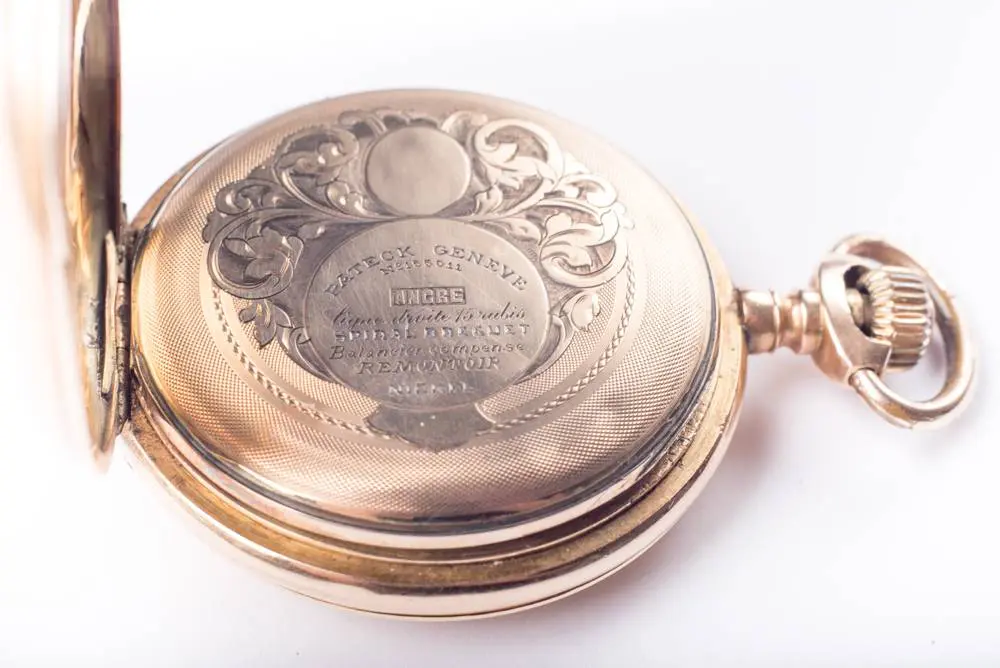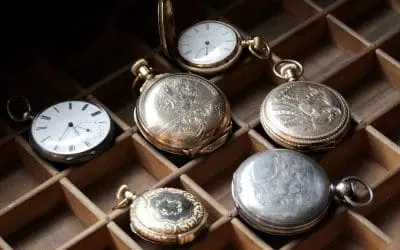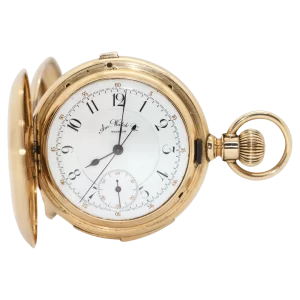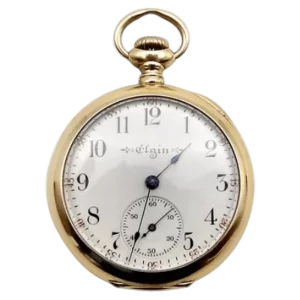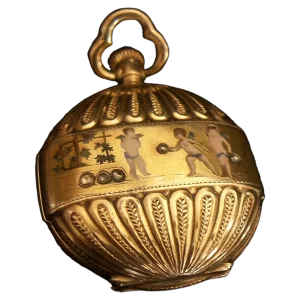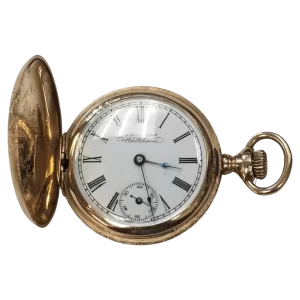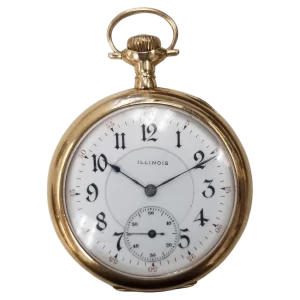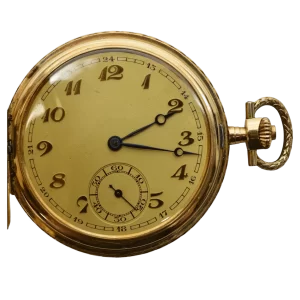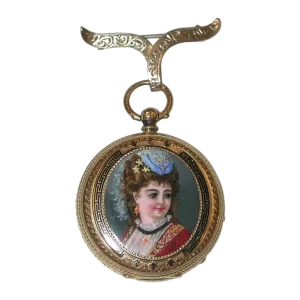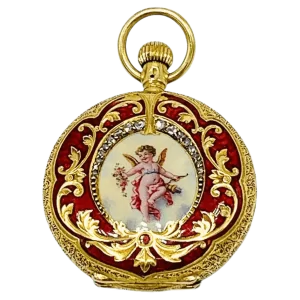Many European-made pocket watches have a wealth of information written on the dust cover and/or movement. Unfortunately, not only are the words often in a foreign language such as French, they are often highly idiomatic and not in common usage today. Many novice collectors see this writing and mistakenly assume it is the name of the watchmaker, when in fact it is actually just describing the type of watch.
Here, then, is a list of commonly found foreign terms and what they actually mean:
Acier – steel or gunmetal [usually found on the case itself] Aiguilles – Literally “needles” [or “hands”], this indicates which keyhole is for setting the time.
Ancre – indicates the watch has a lever escapement.
Balancier – the balance wheel Balancier Compensateur – a compensated balance [i.e., one with little timing screws set along the edges]
Brevet – patented [usually followed by a patent number].
Chaux de Fonds – A Swiss town famous for watchmaking, part of the Neuchâtel region.
Chaton – jewel setting.
Cuivre – copper or brass [usually found on a dust cover to indicate that it is not gold or silver like the rest of the case].
Echappement – escapement. Echappement a Ancre – lever escapement.
Echappement a Cylindre – cylinder escapement. Echappement a Ligne Droit – straight line lever escapement [as opposed to the English-style right angle lever escapement]
et CIE – “and Company” [usually follows a name and indicates that this is the company that made/sold the watch].
et Fils – “and son” or “and sons” [watchmaking was often a family business handed down from generation to generation].
Geneve – Geneva, Switzerland [a watchmaking city].
Huit Trous Joyaux – literally, “eight holes jeweled.” The watch may actually have more than 8 total jewels, though.
Levees Visibles – Visible escapement [technically, it means that the pallets, which are part of a lever escapement, can be seen from the back of the watch movement without disassembling it].
Locle – another watchmaking town in Switzerland.
Neuchâtel – another watchmaking region in Switzerland.
Remontoir – Keyless winding [technically, a remontoir is a small spiral spring, continually wound by the mainspring, which provides constant force to the escapement. However, this term is often used on low to medium grade antique Swiss watches simply to mean that the watch features the ”new” stem winding feature].
Rubis – jewels [literally “rubies”]
Spiral Breguet – A type of hairspring [technically it describes a type of design of a part of the hairspring — the overcoil — but the important thing is that this describes the hairspring and not the watch or its maker].
So, for example, a watch that has the following engraved on the dust cover:
ANCRE a Ligne Droit SPIRAL BREGUET Huit Trous Joyaux Remontoir Bautte et Fils GENEVE
would be a watch with a straight line lever escapement, a spiral Breguet hairspring, at least 8 jewels, is stem wound, and which was made [or just sold] by Bautte and Sons of Geneva, Switzerland.

